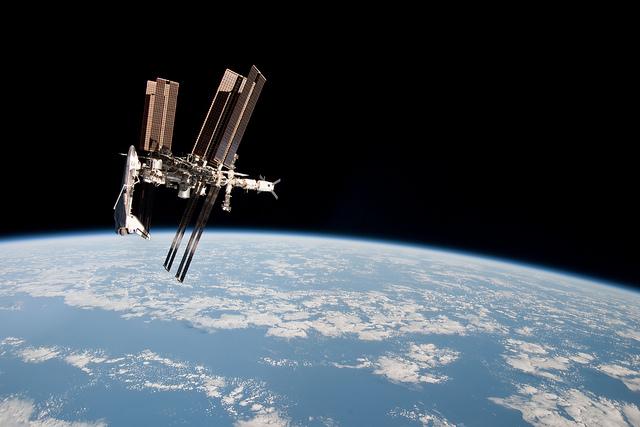
Sea State
The search is officially underway for Canada’s new major surface combatant. Last week, the Canadian government requested off-the-shelf design and combat systems integration proposals from 12 pre-qualified bidders for its Canadian Surface Combatant (CSC) project. The CSC project is set to replace Canada’s fleet of Halifax-class frigates and (now mostly retired) Iroquois-class destroyers with up to 15 new ships. According to the Canadian Broadcasting Corporation, Ottawa is demanding a high level of detail from the bidders, including the number of nuts and bolts that will be used during construction. While the exact cost of the ships won’t be known until a design is selected next year, observers are pegging the project at around C$40 billion.
One of Russia’s most intriguing submarines, the Podmoskovye, began sea trials last week. The Podmoskovye is a Delta IV stretch nuclear-powered ballistic missile submarine that has been converted to serve as a mothership for unmanned underwater vehicles and Russia’s mysterious Project 1851-class (‘Paltus’), Project 10831-class (‘Losharik’) and Project 1910 (‘Kashalot’) submarines. Little’s known about those vessels (save for the photo of one was accidentally published on the cover of a car magazine) but many analysts believe that their focus is on deep water intelligence gathering and ocean surveillance missions.
Flight Path
A-10 news has kept us on our toes this year. The US Air Force’s attempts to divest the A-10 Thunderbolt (aka Warthog) in favour of funding the F-35 stealth fighter has resulted in repeated pressure from US Congress and the public. As a result, retirement plans have been pushed back numerous times. But ground troops can breathe a sigh of relief this week as US Air Force Materiel Command (AFMC) chief Gen. Ellen Pawlikowski confirmed plans to fly the A-10 indefinitely. AFMC has reportedly begun rebuilding depot-line capacity and the supply chain to provide more A-10 sustainment.
China has accused Japan of ‘unprofessional, dangerous and provocative behaviour’ and endangering its military aircraft, including locking fire-control radars onto PLA Air Force aircraft. Japan’s Air Self-Defense Force has reportedly dispatched fighter jets 571 times during the 2015–16 fiscal year in order to intercept Chinese military aircraft approaching or flying in Japanese airspace.
Rapid Fire
India is on track to procure 145 American M777 Ultra Lightweight Howitzers. The Indian Defence Ministry’s Defence Acquisition Council (DAC) approved the purchase in July. Disagreements delayed final acceptance until 20 October, when the DAC cleared the US$750 million acquisition. Manufactured by BAE Systems, the guns are easily airlifted for use in mountain warfare, and will be deployed in high altitude areas in Arunachal Pradesh and Ladakh, on the Sino–Indian border. The deal marks India’s first artillery purchase since the Bofors scandal in the 1980s.
Melbourne-based defence systems integrator Tectonica is set to team up with German firm Rheinmetall Defence to advance the latter’s bid for Phase 2 of the Australian Army’s Land 400 project. Rheinmetall offered its Boxer Combat Reconnaissance Vehicle to meet the Phase 2 requirement. The partnership, announced on 28 October, will see Rheinmetall provide funding and support for Tectonica in developing and manufacturing a local situational awareness system (LSAS) for the Boxer. Under the agreement, if Rheinmetall’s bid is successful, the LSAS will be made available for export through its global supply chain.
Finally, the US Army expects laser weapons for the defence of vehicles against artillery and mortar shells and drones to become operational by 2023. Check out more in this video report.
Zero Gravity
An upgraded Russian Soyuz MS-01 capsule has landed in the deserts of Kazakhstan, returning three Russian, American and Japanese astronauts to Earth. Their successful landing marked the end of a 115-day space mission to the International Space Station. The team performed almost 160 experiments and technology tests in space, including the first genetic sequencing in space.
Where do NASA’s Deep Space Probes go when they finish their missions? Suzanne Dodd, project manager of the Voyager Interstellar Mission at NASA’s Jet Propulsion Laboratory, tracks and manages the probes long after their missions have ended. The Voyager 1, which launched in 1977, has travelled 12.5 billion miles from Earth in the direction of interstellar space. Dodd and other NASA scientists monitor the probes for any data their slowly failing instruments can send back to Earth.
A study of six NASA astronauts has revealed the effects of long-term space missions on the spine. While the spine lengthens, giving astronauts extra height, their paraspinal muscles are reduced, making them more likely to suffer strong back pain and slipped discs after missions. Orthopaedic surgeons have suggested using specially designed exercise programs and yoga in space to compensate for the absence of load bearing on the muscles in zero gravity.